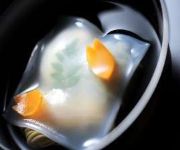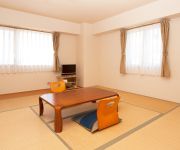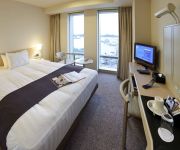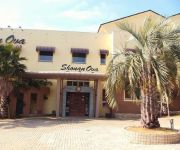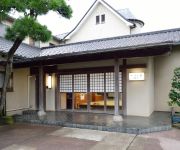Safety Score: 2,8 of 5.0 based on data from 9 authorites. Meaning we advice caution when travelling to Japan.
Travel warnings are updated daily. Source: Travel Warning Japan. Last Update: 2024-08-13 08:21:03
Delve into Shimokōji
The district Shimokōji of in Miura-gun (Kanagawa) is a district located in Japan about 29 mi south of Tokyo, the country's capital town.
In need of a room? We compiled a list of available hotels close to the map centre further down the page.
Since you are here already, you might want to pay a visit to some of the following locations: Zushi, Kamakura, Yokosuka, Fujisawa and Miura. To further explore this place, just scroll down and browse the available info.
Local weather forecast
Todays Local Weather Conditions & Forecast: 12°C / 54 °F
| Morning Temperature | 12°C / 54 °F |
| Evening Temperature | 14°C / 58 °F |
| Night Temperature | 12°C / 54 °F |
| Chance of rainfall | 0% |
| Air Humidity | 40% |
| Air Pressure | 1017 hPa |
| Wind Speed | Strong breeze with 19 km/h (12 mph) from South |
| Cloud Conditions | Overcast clouds, covering 100% of sky |
| General Conditions | Overcast clouds |
Sunday, 24th of November 2024
12°C (53 °F)
12°C (54 °F)
Broken clouds, moderate breeze.
Monday, 25th of November 2024
11°C (53 °F)
13°C (55 °F)
Sky is clear, moderate breeze, clear sky.
Tuesday, 26th of November 2024
13°C (55 °F)
19°C (67 °F)
Light rain, gale, overcast clouds.
Hotels and Places to Stay
Kamakura Park Hotel
Hayamakan (Kanagawa)
Mercure Yokosuka
(RYOKAN) Kotsubo Kaigan Rinka
Shonan OVA
Hotel Mets Kamakura Ofuna
Hotel Kamakura Mori
(RYOKAN) Kaihinso Kamakura
Sajima Marina Hotel
(RYOKAN) Mishimaya
Videos from this area
These are videos related to the place based on their proximity to this place.
平成26年11月23日 交流演奏会 in ZUSHI ミルカミルカ
1.Munasqechay ムナスカチャイ(愛してる) 2.Llorando se fue ジョランド・セ・フェ(泣きながら) 3.Cuando Florezca el Chuño チューニョの花の咲く頃...
Zushi Marina 逗子マリーナ
神奈川県逗子市にある逗子マリーナです。 Zushi Marina Kamakura Kanagawa Japan. DJI Phantom 逗子マリーナ(ずしマリーナ)は、神奈川県逗子市小坪の相模湾...
ZUSHI MARINA aerial shot by DJI Phantom2 + GoPro HERO3
DJI Phantom2 + GoPro HERO3によるリビエラ逗子マリーナの空撮ムービー。 協力 リビエラシネマスタジオ http://www.riviera-i.jp/ リビエラ逗子マリーナ...
逗子Zushi BC定例活動 8月7日(土) 2010
Zushi Beachclub 定例活動 ウインドウインドサーフィン シーカヤック ディンギーヨット アウトリガーカヌー シーカヤック サーフィンなどの...
2013.09.16 TD18 Zushi Beach サーファーから見た夕暮れ
南西から勢力を増して北上してきた台風18号 三連休の最終日に関東へ接近上陸 午後には東北へぬけて風もおさまり 17:00に逗子海岸をチ...
Zushi beach
This beach is near the city of Yokohama in Japan. Compared to other nearby beached, it is shallower and has cleaner water, with a dynamic beach-life after the sunset. The beach use to be full...
逗子zushi BC 海の日イベント 7月19日(月祭)2010
7月19日(土)逗子ビーチクラブ海の日特別イベント ウインドサーフィン シーカヤック ディンギーヨット アウトリガーカヌー シーカヤッ...
Videos provided by Youtube are under the copyright of their owners.
Attractions and noteworthy things
Distances are based on the centre of the city/town and sightseeing location. This list contains brief abstracts about monuments, holiday activities, national parcs, museums, organisations and more from the area as well as interesting facts about the region itself. Where available, you'll find the corresponding homepage. Otherwise the related wikipedia article.
Zushi Station
Zushi Station is a railway station in Yokosuka, Kanagawa, Japan, operated by East Japan Railway Company (JR East). It is located 8.4 kilometers from the junction at Ōfuna Station, and 57.8 kilometers from Tokyo Station.
Jimmuji Station
Jimmuji Station is a railway station operated by Keikyu on the Zushi Line located in Zushi, Kanagawa, Japan. It is located 4.1 rail kilometers from the junction at Kanazawa Hakkei Station, and 45.0 rail kilometers from the northern terminus at Shinagawa Station.
Shin-Zushi Station
Shin-Zushi Station is a railway station operated by Keikyū Zushi Line located in Zushi, Kanagawa Prefecture, Japan. It is the southern terminus of the Zushi Line, and is located 5.9 rail kilometers from the Kanazawa Hakkei junction, and 46.8 kilometers from the opposing northern terminus at Shinagawa Station.
Yuigahama
is a beach near Kamakura, a city in Kanagawa Prefecture, Japan. The relation between the beach and its neighboring areas is complex. Although Yuigahama is legally the entire 3.2 km beach that goes from Inamuragasaki, which separates it from Shichirigahama, to Zaimokuza's Iijima cape, which separates it from Kotsubo and the Miura Peninsula, the name is customarily used to indicate the portion west of the Namerigawa river, while the eastern half is called Zaimokuza Beach .
Wakae Island
Wakae Island is an artificial island, the oldest in Japan, now in ruins. The name means "Waka Bay Island" from Waka, Zaimokuza's old name (see the text of the commemorative stele, below). Its remains are located at the east end of Zaimokuza Beach near Kamakura and are still visible at low tide. It was built in 1232 and, in spite of its state of disrepair, it has been declared a national Historic Site because it is the sole surviving example of an artificial harbor from the Kamakura Period.
Graduate University for Advanced Studies
The Graduate University for Advanced Studies is one of the national universities of Japan. It is located in the town of Hayama in Kanagawa Prefecture. It was established in 1988. Its nickname is Sōkendai . From 1988 to 1995 the university's headquarters was located in Nagatsuta, Midori-ku, Yokohama.
An'yō-in (Kamakura)
An'yō-in is a Jōdo shū Buddhist temple in Kamakura, Kanagawa, Japan. Famous for its azaleas, it was named after its founder's (great historical figure Hōjō Masako) posthumous name. The main object of worship is Amida Nyorai, but it also enshrines Senju Kannon, Goddess of Mercy. An’yō-in is Number three of the 33 temples of the Bandō Sanjūsankasho pilgrimage circuit.
Tōshō-ji
was the Hōjō clan's family temple in Kamakura during the Kamakura period. Its founder was Taikō Gyōyū and it was constructed in 1237 by Hōjō Yasutoki in memory of his mother, who had her tomb there. According to the Taiheiki, from its foundation until the end of the Kamakura shogunate every regent was buried there. The temple no longer exists, since it was set on fire by the Hōjō themselves when the entire family committed suicide after Nitta Yoshisada's invasion of Kamakura on July 4, 1333.
Zaimokuza
is an area within the Kamakura, Kanagawa Pref. , in Japan that runs along the sea from Cape Iijima near Kotsubo harbor to the estuary of the Namerigawa. The relation between the beach's name and that of its neighboring areas is complex. Although Yuigahama is in fact the entire 3.2 km beach that goes from Inamuragasaki to Zaimokuza's Iijima cape, the name is usually used to indicate just its half west of the Namerigawa river, while the eastern half is called Zaimokuza Beach .
Moto Hachiman
Moto Hachiman is a small but very old and historically important Shinto shrine in Kamakura, Kanagawa Pref. , Japan.
Hayama Imperial Villa
, located in the town of Hayama, Kanagawa Prefecture, Japan is a residence owned by the Japanese Imperial Family, and used on infrequent intervals as an informal winter retreat.
Nameri River (Kanagawa)
The Nameri River is a river that goes from the Asaina Pass in northern Kamakura, Kanagawa to the beach in Yuigahama, for a total length of about 8 km. Although Yuigahama is in fact the name of the entire 3.2 km beach that goes from Inamuragasaki to Zaimokuza's Iijima cape, the name is usually used just for its half west of the Namerigawa river's estuary, while the eastern half is called Zaimokuza Beach .
Hatakeyama Shigeyasu's grave
Hatakeyama Shigeyasu's grave was a Kamakura period warrior who fell victim of political intrigue in 1205. The grave under a tabu no ki tree near the Yuigahama end of Wakamiya Ōji Avenue in Kamakura, Kanagawa Prefecture, Japan and next to Tsurugaoka Hachiman-gū's first torii is traditionally supposed to be his. It is an Important Cultural Property and a famous example of hōkyōintō (a type of pagoda).
Ōmachi (Kanagawa)
Ōmachi is a locality (a machi or chō) in Kamakura, Kanagawa prefecture, Japan, defined as the part of town south of the Ebisubashi bridge on the Namerigawa. The part of town north of the same bridge is called Komachi .
Kantō kubō
(also called Kantō gosho, Kamakura kubō, or Kamakura gosho) was a title equivalent to shogun assumed by Ashikaga Motouji after his nomination to Kantō kanrei, or deputy shogun for the Kamakura-fu, in 1349. Motouji transferred his original title to the Uesugi family, which had previously held the hereditary title of shitsuji, and would thereafter provide the Kantō kanrei.
Ōmachi Ōji
is the name of a street in Kamakura, Kanagawa, Japan, which begins at Geba Yotsukado and ends at the Nagoshi Pass. It takes its name from the district of Ōmachi, which it crosses. At the time of the shogunate it was the most important road that went from east to west. The entertainment and red-light district of the city used to be at the intersection between Komachi Ōji and Ōmachi Ōji.
Nikaidō
is the name of one of the administrative units of Kamakura, a city located in Kanagawa, Japan, about 50 km south-south-west of Tokyo. Nikaidō lies immediately to the east of Nishi Mikado and Yukinoshita, and used to be called Higashi Mikado. The name is still sometimes used. In it lie famous temples and shrines like Zuisen-ji, Egara Tenjinsha, Kamakura-gū and Kakuon-ji. It's in Nikaidō that first Kamakura shogun Minamoto no Yoritomo built Yōfuku-ji, one of his most important temples.
Myōhō–ji
Myōhō–ji is a Buddhist temple of the Nichiren sect in Kamakura, Kanagawa, Japan. It is one of a group of three built near the site in Matsubagayatsu, or the Valley of Pine Needles, where Nichiren, founder of the Buddhist sect that bears his name, is supposed to have had his hut. The temple has also close ties with Prince Morinaga and the Imperial House.
Ankokuron-ji
Ankokuron-ji is a Buddhist temple of the Nichiren sect in Kamakura, Kanagawa, Japan. It is one of a group of three built near the site in Matsubagayatsu (Valley of Pine Needles where Nichiren, founder of the Buddhist sect that bears his name, is supposed to have had his hut.
Chōshō-ji
Chōshō-ji is a Buddhist temple of the Nichiren Shū in Kamakura, Kanagawa, Japan. It's one of a group of three built near the site in Matsubagayatsu (Valley of Pine Needles where Nichiren, founder of the Buddhist sect that bears his name, is supposed to have had his hut. The first part of its name derives from the founder's last name, the second is an alternative reading of the characters for Nagakatsu, the founder's first name.
Kōmyō-ji (Kamakura)
is a Buddhist temple of the Jōdo sect in Zaimokuza, near Kamakura, Japan, the only major one in the city to be close to the sea. Kōmyō-ji is number one among the Kantō Jūhachi Danrin, a group of 18 Jōdo temples established during the Edo period by Tokugawa Ieyasu, and dedicated to both the training of priests and scholarly research. It is also the sect's head temple for the Kantō region.
Jōmyō-ji (Kamakura)
is a Zen Buddhist temple of the Rinzai sect, Kenchō-ji school, in Kamakura, Kanagawa Prefecture, Japan. Jōmyō-ji is Number Five of the five temples known as Kamakura Gozan ("Kamakura's Five Mountains"), and the only one of the five not founded by a member of the Hōjō clan. Jōmyō-ji has instead, as nearby Zuisen-ji, deep ties with the Ashikaga clan, and was one of the family's funeral temples. For this reason the family's kamon, or crest, is ubiquitous on its premises.
Sugimoto-dera
Sugimoto-dera is a Buddhist temple in Kamakura, Kanagawa Prefecture, Japan, one of the oldest temple in Kamakura and, together with Hōkai-ji, the only one of the Tendai denomination. The temple is Number one of the Bandō Sanjūsankasho pilgrimage circuit. Two of the three statues of goddess Kannon it enshrines are Important Cultural Properties. Sugimotodera is nicknamed Geba Kannon ("Dismount Kannon"), because horsemen never failed to dismount from their steeds when they passed by.
Higashi-Zushi Station
Higashi-Zushi Station is a railway station operated by JR East's Yokosuka Line located in Zushi, Kanagawa, Japan. It is located 10.4 kilometers from Ōfuna switch point, and 59.8 kilometers from the Tokyo Station.
Hōkoku-ji
Hōkoku-ji is an old temple in the Kenchō-ji school of the Rinzai sect of Zen Buddhism located in Kamakura, Japan. Famous for its bamboo garden, it is also known as "Bamboo Temple". A statue of Gautama Buddha, called Shaka Nyorai in Japanese, in a sacred hall is the temple's principal image. The original of a statue of Sho Kan'non is on display at the Kamakura Museum of National Treasures.


